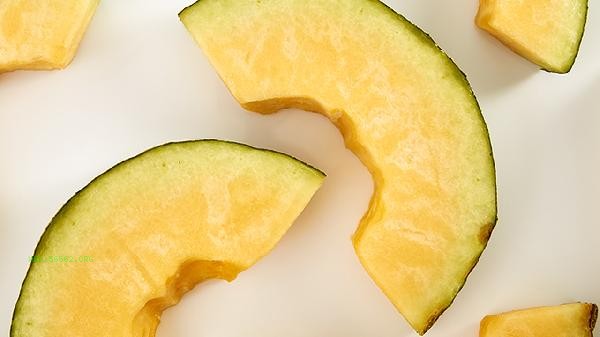The maturity and quality of Hami melons can be determined by observing their appearance, pressing their hardness, smelling their aroma, weighing them, and examining their stems.

1. Appearance
High quality cantaloupe has a uniform yellow or yellow green skin, clear and dense mesh patterns, and even distribution. Avoid selecting melons with damaged, dented, or moldy skin. The mesh pattern of mature cantaloupe will change from green to gray white, and the thicker the pattern, the more abundant the nutrients during the growth process. The shape of the melon should be full and symmetrical, with slight indentations at both ends being a normal phenomenon.
2. Pressing hardness
Gently press the navel of the melon with your fingers. Mature cantaloupe will show slight elasticity, while if it is too hard, it indicates that it is not fully ripe. If it is too soft, it may be overripe or spoiled. Pay attention to even pressure when pressing, to avoid damage to the melon body caused by local force. At the same time, touching the melon skin should feel delicate and smooth, and the obvious roughness may be an old melon.
3. Smell
Mature cantaloupe can smell a strong sweet aroma at the stem. If there is no aroma or a grassy scent, it indicates insufficient maturity. If it emits the smell of alcohol fermentation, it has spoiled. You can leave the melon at room temperature for 1-2 days until the aroma is fully released before eating. Note that some varieties have a weak aroma and need to be judged by combining other methods.

4. Weighing
Under the same volume, heavier ones usually have more water content. When gently shaken, a slight shaking sound can be heard, indicating that the fruit pulp and seeds are fully separated. But being too heavy may indicate immaturity, while being too light may result in dehydration. When choosing sizes that are similar, a weight difference within the range of 10% -15% is ideal.
5. Check the stem.
The stem of fresh cantaloupe is green and slightly moist, and if it is dry and blackened, it indicates that the harvesting time is too long. The circular depression formed by the natural detachment of the melon stem is a normal phenomenon, and the flat incision manually removed may affect the storage time. Cracks around the pedicle are prone to bacterial growth.

It is recommended to store the selected cantaloupe in a cool and ventilated place. After cutting, it should be refrigerated and consumed within 2 days. Before consumption, the melon can be left at room temperature for 30 minutes to enhance its sweetness, but avoid direct sunlight. Individuals with high blood sugar levels should control their single intake and consume protein foods to slow down sugar absorption. For people with gastrointestinal sensitivity, it is recommended to remove the white part near the melon skin to reduce irritation.








Comments (0)
Leave a Comment
No comments yet
Be the first to share your thoughts!